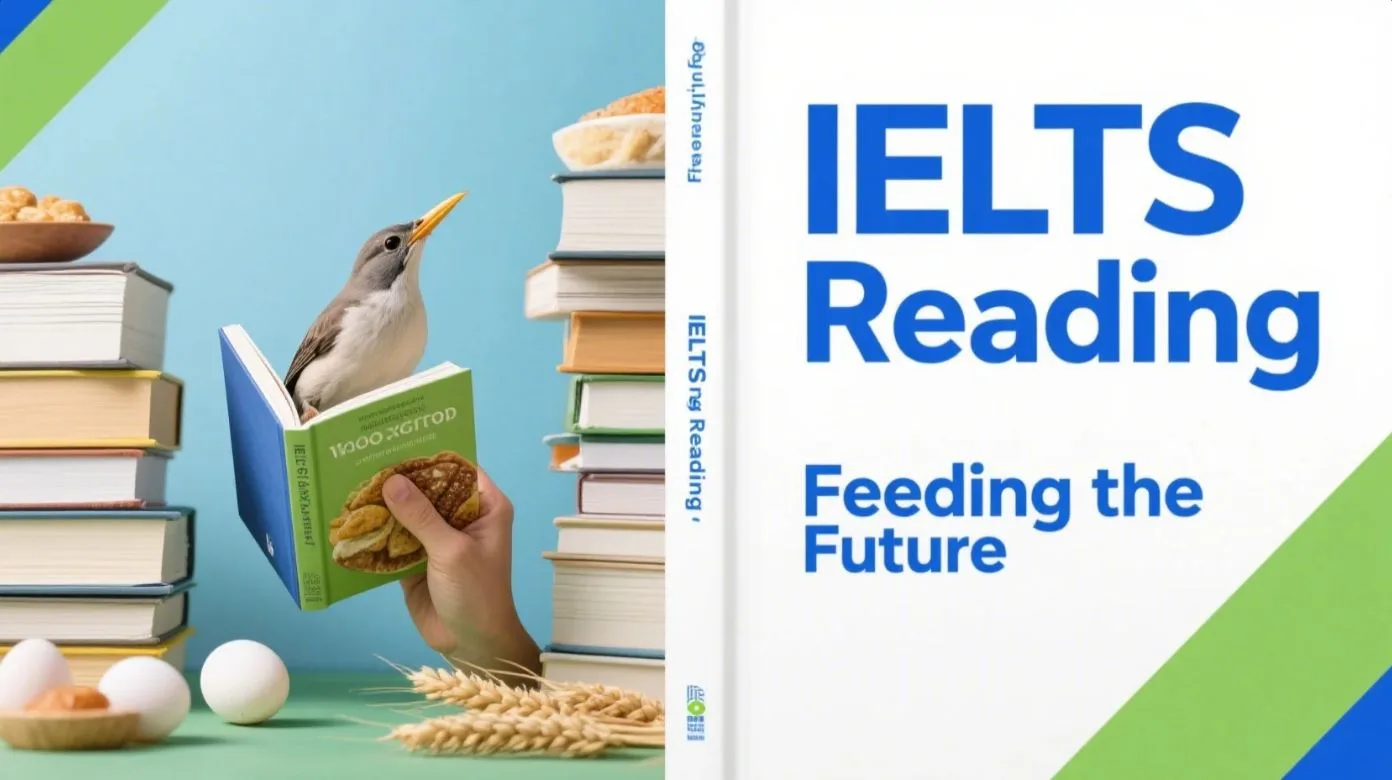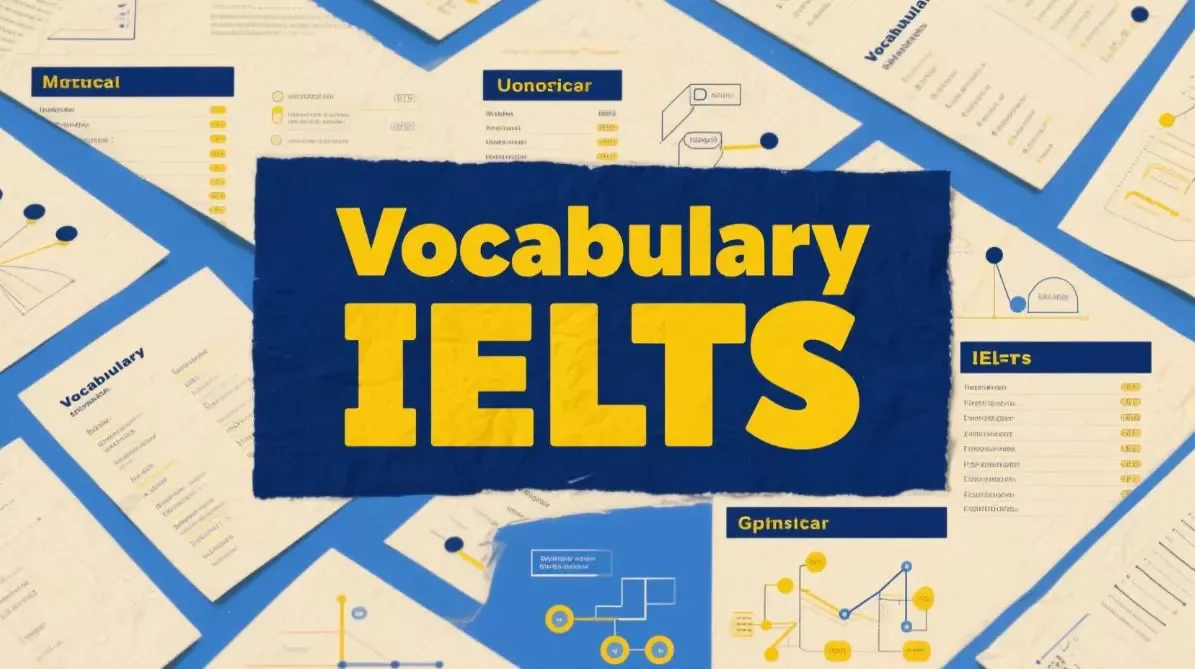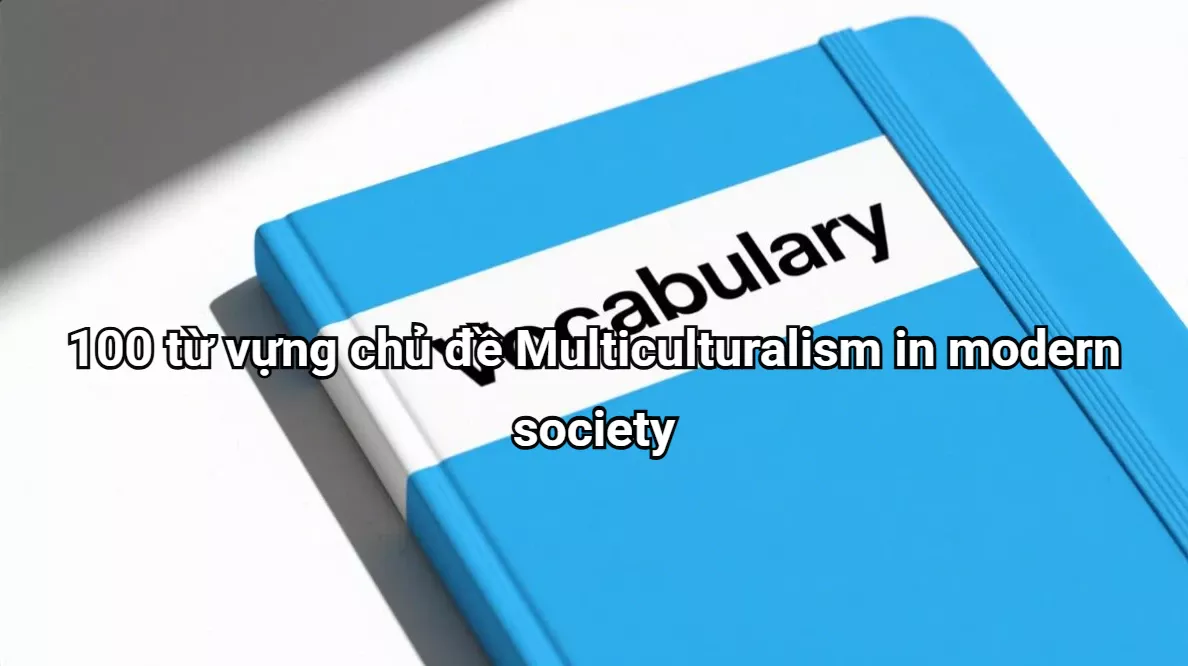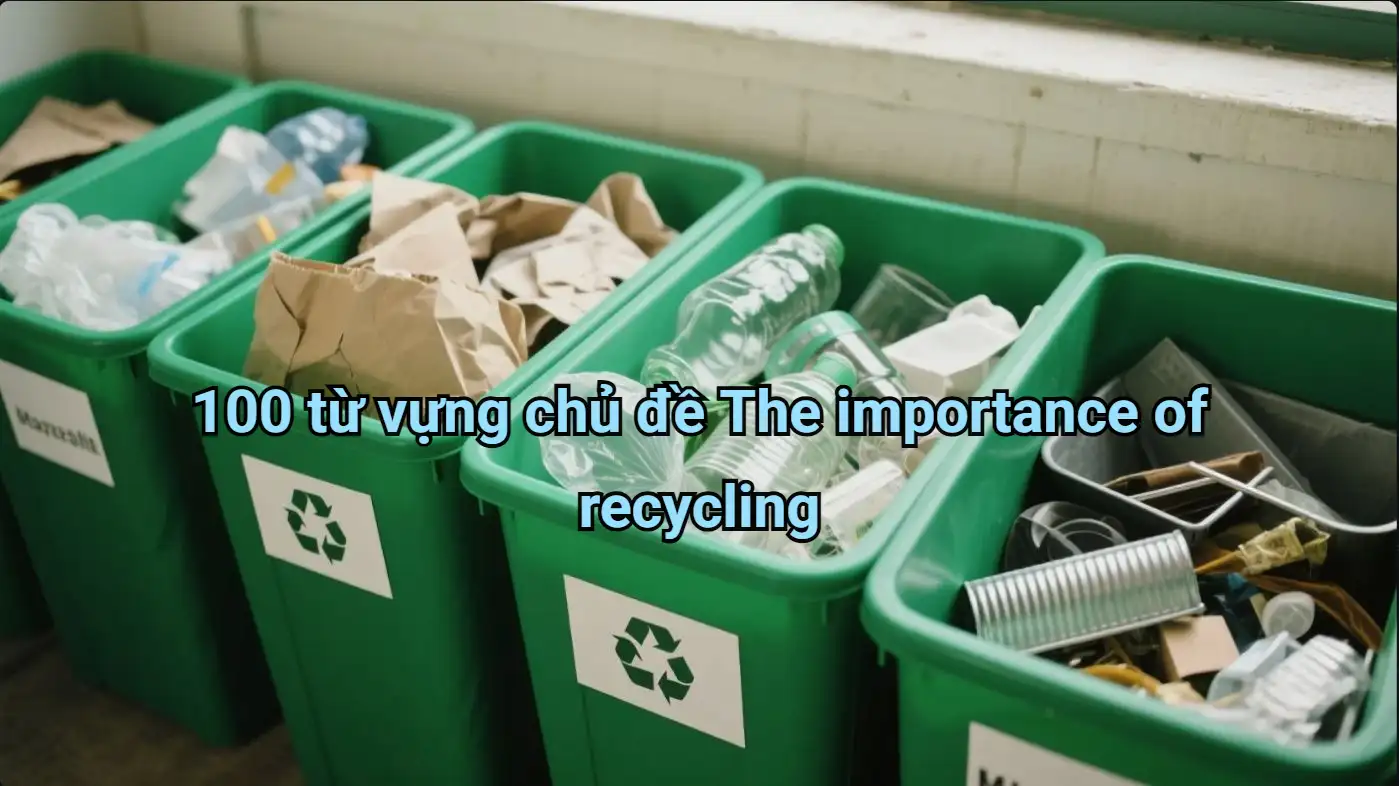Kỹ năng đọc hiểu trong kỳ thi IELTS là một thử thách đòi hỏi sự tập trung và chiến lược rõ ràng để xử lý các văn bản học thuật phức tạp. IELTS Reading đánh giá khả năng nắm bắt ý chính, phân tích chi tiết và suy luận logic trong thời gian giới hạn. Với các bài đọc đa dạng và độ khó tăng dần, thí sinh cần rèn luyện kỹ thuật đọc hiệu quả để tối ưu hóa điểm số và đạt mục tiêu band cao.
Đọc thêm: IELTS Reading Practice Test: The Ocean’s Fragile Balance.
Sustainable Agriculture: Feeding the Future
Sustainable agriculture is a farming approach that meets current food demands without compromising future generations’ ability to produce food. It emphasizes eco-friendly practices, such as crop rotation, organic fertilizers, and integrated pest management, to maintain soil health and reduce chemical use. These methods help preserve biodiversity and minimize environmental damage compared to conventional farming, which often relies on synthetic pesticides and monoculture.
In many regions, farmers are adopting sustainable techniques to combat climate change. For example, drip irrigation conserves water by delivering it directly to plant roots, improving efficiency in dry areas like Sub-Saharan Africa. Similarly, agroforestry, which combines trees with crops, enhances soil fertility and provides shade, benefiting both yields and ecosystems. In 2023, sustainable farming practices contributed to 20% of global food production, a figure projected to rise as awareness grows.
Despite its benefits, sustainable agriculture faces challenges. High initial costs for transitioning to organic methods or installing systems like drip irrigation can deter farmers. Additionally, yields may be lower than conventional methods in the short term, raising concerns about food security. Governments and organizations are addressing these issues through subsidies and training programs, particularly in developing nations. Critics, however, argue that sustainable agriculture alone cannot meet global food demands due to population growth. Nevertheless, with technological advancements and policy support, sustainable agriculture offers a viable path to balance food production and environmental health.
Câu hỏi
Questions 1–40
Question 1 (Multiple Choice)
What is a key goal of sustainable agriculture?
A. To maximize short-term crop yields
B. To meet food demands without harming future production
C. To increase the use of synthetic pesticides
D. To focus solely on monoculture farming
Question 2 (Multiple Choice)
Why is drip irrigation considered sustainable?
A. It reduces water usage in farming.
B. It increases reliance on chemical fertilizers.
C. It is cheaper than traditional irrigation.
D. It only works in wet climates.
Question 3 (True/False/Not Given)
Sustainable agriculture relies entirely on monoculture practices.
A. True
B. False
C. Not Given
Question 4 (True/False/Not Given)
Agroforestry improves soil fertility by integrating trees with crops.
A. True
B. False
C. Not Given
Question 5 (Yes/No/Not Given)
Does the passage suggest that sustainable agriculture can fully solve global food security issues?
A. Yes
B. No
C. Not Given
Question 6 (Yes/No/Not Given)
Are subsidies mentioned as a way to support sustainable agriculture?
A. Yes
B. No
C. Not Given
Question 7 (Matching Information)
Which paragraph discusses the contribution of sustainable agriculture to global food production?
A. Paragraph 1
B. Paragraph 2
C. Paragraph 3
D. Paragraph 4
Question 8 (Matching Information)
In which paragraph are the challenges of transitioning to sustainable agriculture mentioned?
A. Paragraph 1
B. Paragraph 2
C. Paragraph 3
D. Paragraph 4
Question 9 (Matching Headings)
Choose the correct heading for Paragraph 1:
A. Challenges of Sustainable Farming
B. Introduction to Sustainable Agriculture
C. Global Impact of Agriculture
D. Technological Advances in Farming
Question 10 (Matching Headings)
Choose the correct heading for Paragraph 2:
A. Benefits of Conventional Farming
B. Examples of Sustainable Practices
C. Government Support for Farmers
D. Future of Food Production
Question 11 (Matching Sentence Endings)
Drip irrigation is effective because it …
A. delivers water directly to plant roots.
B. increases pesticide use.
C. requires large amounts of water.
D. is only used in urban areas.
Question 12 (Matching Sentence Endings)
Sustainable agriculture faces challenges because …
A. it always produces higher yields.
B. of high initial costs for farmers.
C. it requires no training.
D. it has no environmental benefits.
Question 13 (Sentence Completion)
Sustainable agriculture aims to maintain _______ health.
Question 14 (Sentence Completion)
Agroforestry enhances _______ by combining trees with crops.
Question 15 (Summary Completion)
Complete the summary using words from the passage:
Sustainable agriculture uses practices like crop rotation and _______ fertilizers to protect the environment.
Question 16 (Summary Completion)
In 2023, sustainable farming accounted for _______ of global food production.
Question 17 (Diagram Label Completion)
Label the diagram of a drip irrigation system:
The method that delivers water to plant roots is called _______ irrigation.
Question 18 (Diagram Label Completion)
Label the diagram of an agroforestry system:
The practice of combining trees with crops is known as _______.
Question 19 (Short Answer Questions)
What is one environmental benefit of sustainable agriculture mentioned in the passage?
Question 20 (Short Answer Questions)
What percentage of global food production did sustainable agriculture contribute to in 2023?
Question 21 (Table Completion)
Complete the table below with information from the passage:
| Practice | Benefit | Challenge |
|---|---|---|
| Drip Irrigation | Conserves water | _____________ |
| Agroforestry | _____________ | Requires land management |
| Crop Rotation | Maintains soil health | _____________ |
Question 22 (Multiple Choice)
What is a limitation of sustainable agriculture mentioned in the passage?
A. It is always more expensive than conventional farming.
B. It may produce lower yields in the short term.
C. It increases environmental damage.
D. It requires no technological support.
Question 23 (True/False/Not Given)
Sustainable agriculture eliminates the need for chemical fertilizers entirely.
A. True
B. False
C. Not Given
Question 24 (Yes/No/Not Given)
Does the passage indicate that sustainable agriculture is expected to grow in the future?
A. Yes
B. No
C. Not Given
Question 25 (Matching Information)
Which paragraph mentions the use of organic fertilizers?
A. Paragraph 1
B. Paragraph 2
C. Paragraph 3
D. Paragraph 4
Question 26 (Matching Headings)
Choose the correct heading for Paragraph 3:
A. Benefits of Sustainable Practices
B. Challenges and Support for Sustainable Agriculture
C. Comparison with Conventional Farming
D. Technological Innovations in Agriculture
Question 27 (Sentence Completion)
Sustainable farming practices are particularly beneficial in regions like _______ Africa.
Question 28 (Summary Completion)
Sustainable agriculture helps combat _______ change by using eco-friendly methods.
Question 29 (Short Answer Questions)
What is one challenge mentioned for adopting sustainable agriculture?
Question 30 (Diagram Label Completion)
Label the diagram of a sustainable farming system:
The practice of rotating crops to maintain soil health is called _______ rotation.
Question 31 (Multiple Choice)
How are governments supporting sustainable agriculture?
A. By increasing pesticide use
B. Through subsidies and training programs
C. By promoting monoculture farming
D. By reducing food production
Question 32 (True/False/Not Given)
Agroforestry is only effective in tropical regions.
A. True
B. False
C. Not Given
Question 33 (Yes/No/Not Given)
Does the passage suggest that sustainable agriculture can meet global food demands alone?
A. Yes
B. No
C. Not Given
Question 34 (Matching Sentence Endings)
Critics argue that sustainable agriculture cannot meet global food demands because of …
A. its reliance on synthetic pesticides.
B. population growth.
C. its low initial costs.
D. its lack of environmental benefits.
Question 35 (Sentence Completion)
Sustainable agriculture reduces the use of _______ pesticides.
Question 36 (Summary Completion)
Complete the summary:
Sustainable agriculture is supported by _______ and training to overcome challenges like high costs.
Question 37 (Short Answer Questions)
Name one region mentioned in the passage where drip irrigation is effective.
Question 38 (Table Completion)
Complete the table below with information from the passage:
| Practice | Example Location | Benefit |
|---|---|---|
| Drip Irrigation | Sub-Saharan Africa | _____________ |
| Agroforestry | _____________ | Enhances soil fertility |
Question 39 (Multiple Choice)
What is a key feature of integrated pest management mentioned in the passage?
A. It increases chemical use.
B. It helps reduce chemical use.
C. It is only used in monoculture.
D. It has no environmental benefits.
Question 40 (True/False/Not Given)
Sustainable agriculture is more expensive to maintain than conventional farming in the long term.
A. True
B. False
C. Not Given
Đáp án và Giải thích
Question 1
Correct Option: B
Explanation: Bài đọc nêu rằng nông nghiệp bền vững nhằm “meets current food demands without compromising future generations’ ability to produce food.” Lựa chọn B đúng vì nó phản ánh mục tiêu chính này. Các lựa chọn khác không đúng hoặc mâu thuẫn với bài đọc.
Question 2
Correct Option: A
Explanation: Bài đọc giải thích rằng tưới nhỏ giọt tiết kiệm nước bằng cách “delivering it directly to plant roots.” Lựa chọn A đúng vì nó nêu lợi ích này. Các lựa chọn khác không được đề cập hoặc sai.
Question 3
Correct Option: B
Explanation: Bài đọc nêu rằng nông nghiệp bền vững tránh monoculture và sử dụng các phương pháp như luân canh cây trồng. Do đó, câu này sai vì nông nghiệp bền vững không dựa hoàn toàn vào monoculture.
Question 4
Correct Option: A
Explanation: Bài đọc đề cập rằng “agroforestry, which combines trees with crops, enhances soil fertility.” Câu này đúng vì thông tin khớp với bài đọc.
Question 5
Correct Option: B
Explanation: Bài đọc nêu rằng các nhà phê bình cho rằng nông nghiệp bền vững không thể đáp ứng hoàn toàn nhu cầu lương thực toàn cầu do dân số tăng. Do đó, đáp án là “No.”
Question 6
Correct Option: A
Explanation: Bài đọc đề cập rằng chính phủ hỗ trợ nông nghiệp bền vững thông qua “subsidies and training programs.” Câu trả lời là “Yes” vì thông tin này được nêu rõ.
Question 7
Correct Option: B
Explanation: Đoạn 2 nêu rằng “sustainable farming practices contributed to 20% of global food production.” Đáp án đúng là B vì thông tin nằm ở đoạn 2.
Question 8
Correct Option: C
Explanation: Các thách thức của việc chuyển đổi sang nông nghiệp bền vững, như chi phí ban đầu cao, được thảo luận ở đoạn 3: “High initial costs… can deter farmers.” Đáp án đúng là C.
Question 9
Correct Option: B
Explanation: Đoạn 1 giới thiệu về nông nghiệp bền vững, các phương pháp thân thiện môi trường, và so sánh với nông nghiệp thông thường. Tiêu đề “Introduction to Sustainable Agriculture” là phù hợp nhất.
Question 10
Correct Option: B
Explanation: Đoạn 2 đưa ra các ví dụ như tưới nhỏ giọt và lâm nông nghiệp, giải thích lợi ích của chúng. Tiêu đề “Examples of Sustainable Practices” phù hợp nhất.
Question 11
Correct Option: A
Explanation: Bài đọc nêu rằng tưới nhỏ giọt hiệu quả vì “delivering it directly to plant roots.” Lựa chọn A đúng vì khớp với thông tin này.
Question 12
Correct Option: B
Explanation: Bài đọc đề cập rằng nông nghiệp bền vững gặp thách thức do “high initial costs for transitioning to organic methods.” Lựa chọn B đúng.
Question 13
Correct Answer: soil
Explanation: Bài đọc nêu rằng nông nghiệp bền vững nhằm duy trì “soil health.” Từ “soil” phù hợp để điền vào chỗ trống.
Question 14
Correct Answer: soil fertility
Explanation: Bài đọc đề cập rằng lâm nông nghiệp “enhances soil fertility” bằng cách kết hợp cây trồng với cây lâu năm. “Soil fertility” là đáp án đúng.
Question 15
Correct Answer: organic
Explanation: Bài đọc liệt kê các phương pháp như luân canh cây trồng và “organic fertilizers” để bảo vệ môi trường. Từ “organic” phù hợp.
Question 16
Correct Answer: 20%
Explanation: Bài đọc nêu rằng vào năm 2023, nông nghiệp bền vững đóng góp “20% of global food production.” Đáp án “20%” là đúng.
Question 17
Correct Answer: drip
Explanation: Bài đọc mô tả phương pháp tưới nhỏ giọt là “drip irrigation.” Từ “drip” phù hợp để gắn nhãn sơ đồ.
Question 18
Correct Answer: agroforestry
Explanation: Bài đọc định nghĩa “agroforestry” là việc kết hợp cây trồng với cây lâu năm. Từ “agroforestry” là đúng.
Question 19
Correct Answer: Preserves biodiversity
Explanation: Bài đọc nêu rằng nông nghiệp bền vững giúp “preserve biodiversity.” Đáp án này khớp với thông tin trong bài.
Question 20
Correct Answer: 20%
Explanation: Bài đọc nêu rằng “sustainable farming practices contributed to 20% of global food production” vào năm 2023. Đáp án “20%” là đúng.
Question 21
Correct Answers:
- Drip Irrigation Challenge: High initial costs
- Agroforestry Benefit: Enhances soil fertility
- Crop Rotation Challenge: Lower short-term yields
Explanation: - Bài đọc nêu rằng tưới nhỏ giọt có thách thức là “high initial costs.”
- Lâm nông nghiệp “enhances soil fertility,” là lợi ích.
- Luân canh cây trồng có thể dẫn đến “lower yields” trong ngắn hạn, như ngụ ý trong đoạn 3.
Question 22
Correct Option: B
Explanation: Bài đọc nêu rằng nông nghiệp bền vững có thể “yields may be lower than conventional methods in the short term.” Lựa chọn B đúng vì phản ánh hạn chế này.
Question 23
Correct Option: B
Explanation: Bài đọc đề cập đến việc sử dụng “organic fertilizers” để giảm phụ thuộc vào hóa chất, nhưng không nói rằng nông nghiệp bền vững loại bỏ hoàn toàn phân bón hóa học. Câu này sai.
Question 24
Correct Option: A
Explanation: Bài đọc nêu rằng tỷ lệ đóng góp của nông nghiệp bền vững được “projected to rise as awareness grows.” Câu trả lời là “Yes” vì thông tin này được đề cập.
Question 25
Correct Option: A
Explanation: Việc sử dụng phân bón hữu cơ được đề cập ở đoạn 1: “organic fertilizers.” Đáp án đúng là A.
Question 26
Correct Option: B
Explanation: Đoạn 3 thảo luận về các thách thức như chi phí ban đầu cao và hỗ trợ từ chính phủ qua trợ cấp. Tiêu đề “Challenges and Support for Sustainable Agriculture” phù hợp nhất.
Question 27
Correct Answer: Sub-Saharan
Explanation: Bài đọc đề cập rằng tưới nhỏ giọt hiệu quả ở “Sub-Saharan Africa.” “Sub-Saharan” là đáp án đúng.
Question 28
Correct Answer: climate
Explanation: Bài đọc nêu rằng nông nghiệp bền vững giúp chống lại “climate change” bằng các phương pháp thân thiện môi trường. Từ “climate” phù hợp.
Question 29
Correct Answer: High initial costs
Explanation: Bài đọc đề cập rằng “high initial costs” là một thách thức khi chuyển đổi sang nông nghiệp bền vững. Đáp án này chính xác.
Question 30
Correct Answer: crop
Explanation: Bài đọc đề cập đến “crop rotation” như một phương pháp để duy trì sức khỏe đất. Từ “crop” phù hợp để gắn nhãn sơ đồ.
Question 31
Correct Option: B
Explanation: Bài đọc nêu rằng chính phủ hỗ trợ nông nghiệp bền vững qua “subsidies and training programs.” Lựa chọn B đúng.
Question 32
Correct Option: C
Explanation: Bài đọc không đề cập rằng lâm nông nghiệp chỉ hiệu quả ở vùng nhiệt đới. Thông tin này là “Not Given.”
Question 33
Correct Option: B
Explanation: Bài đọc nêu rằng các nhà phê bình cho rằng nông nghiệp bền vững không thể đáp ứng hoàn toàn nhu cầu lương thực toàn cầu do “population growth.” Đáp án là “No.”
Question 34
Correct Option: B
Explanation: Bài đọc nêu rằng các nhà phê bình cho rằng nông nghiệp bền vững không thể đáp ứng nhu cầu lương thực do “population growth.” Lựa chọn B đúng.
Question 35
Correct Answer: synthetic
Explanation: Bài đọc nêu rằng nông nghiệp bền vững giảm sử dụng “synthetic pesticides.” Từ “synthetic” phù hợp.
Question 36
Correct Answer: subsidies
Explanation: Bài đọc đề cập rằng nông nghiệp bền vững được hỗ trợ bởi “subsidies and training” để vượt qua thách thức. Từ “subsidies” phù hợp.
Question 37
Correct Answer: Sub-Saharan Africa
Explanation: Bài đọc đề cập rằng tưới nhỏ giọt hiệu quả ở “Sub-Saharan Africa.” Đáp án này chính xác.
Question 38
Correct Answers:
- Drip Irrigation Benefit: Conserves water
- Agroforestry Example Location: Not specified
Explanation: - Bài đọc nêu rằng tưới nhỏ giọt “conserves water,” là lợi ích.
- Bài đọc không đề cập cụ thể địa điểm cho lâm nông nghiệp, nên để trống hoặc ghi “Not specified.”
Question 39
Correct Option: B
Explanation: Bài đọc nêu rằng quản lý sâu bệnh tổng hợp (integrated pest management) giúp “reduce chemical use.” Lựa chọn B đúng.
Question 40
Correct Option: C
Explanation: Bài đọc không so sánh chi phí duy trì lâu dài của nông nghiệp bền vững với nông nghiệp thông thường. Thông tin này là “Not Given.”















